セメントkiの難治性材料は、各部品の労働条件に従って厳密かつ合理的に選択する必要があります。. セメント植物のロータリーキルンには、機械的な強度が良好なために耐火物が必要です, 高い不応。, 温度変化に対する熱衝撃耐性, 小さな熱膨張と燃焼ラインの変化, 化学侵食に対する優れた耐性, 耐摩耗性と気孔率, 正確なサイズ, きちんとした外観, 等.
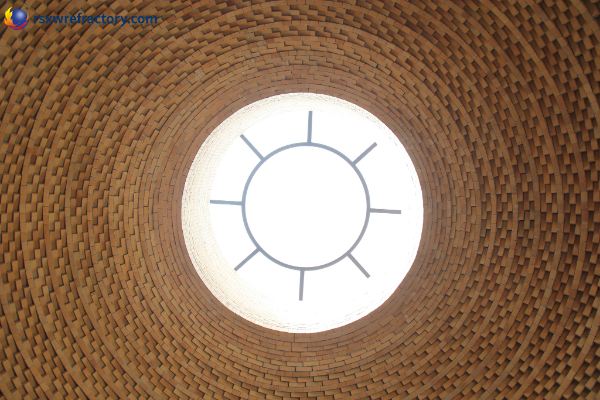
セメントキルンの導入のための難治性材料
耐火粘土レンガ
粘土レンガ ケイ酸塩耐火物製品です 30-40% 酸化アルミニウム含有量. その鉱物組成はです 20-50% ムライト (3AL2O3・SIO2), 25-60% ガラス相, および石英と石英 (まで 30%). 通常の粘土レンガは、一流に分けることができます (>40%), 二流 (>35%), およびサードクラス (>30%) AL2O3コンテンツによると; 対応する屈折率は1730年以上です, 1670℃および1610年; 負荷軟化温度は1250年1450年です; 熱安定性は良好です.
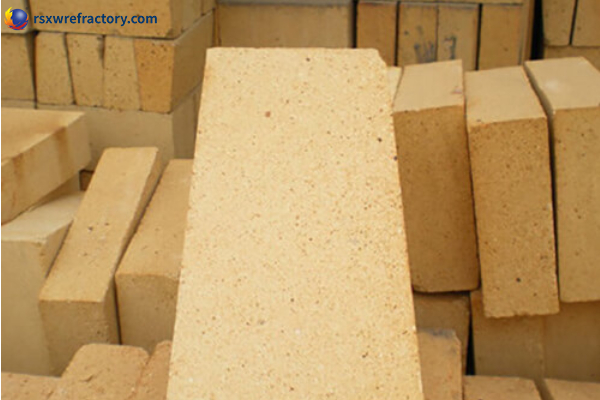
ハイアルミナレンガ
ハイアルミナレンガ ケイ酸塩耐火物製品は、それ以上のものです 48% アルミナコンテンツ. 鉱物組成はcorundumです (A-AL2O3), ムライト, ガラス相, その内容は、AL2O3/SIO2比と不純物の種類と量に依存します. グレードは、AL2O3コンテンツに従って分割されます. 私の国の高アルミナレンガは3つのグレードに分かれています: LZ65にはAL2O365〜70%が含まれています, 屈服1790℃, LZ55にはAL2O355〜65%が含まれています, 屈服1770℃; LZ48にはAL2O3 48〜55%が含まれています, 屈折率1750℃.
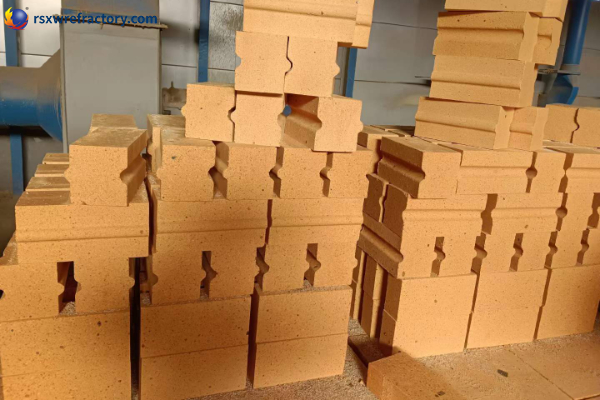
リン酸塩結合高アルミナキルンライニングレンガ
リン酸塩結合高アルミナキルンライニングレンガには、2つの製品が含まれています, 1つは、リン酸塩の高アルミナレンガです (リン酸レンガと呼ばれます), もう1つは、リン酸塩結合高アルミナ摩耗耐性レンガです (耐摩耗性のレンガと呼ばれます). リン酸レンガは、の濃度でリン酸溶液を使用します 42.5-50% バインダーとして, 骨材は、ロータリーキルンで1600°C以上で焼成されたボーキサイトクリンカーです. レンガの使用中, リン酸は、レンガ表面と耐火性粘土の燃焼アルミナの微粉末と反応し、最終的にクリストバライト型のオルトリン酸アルミニウムアルミニウムで構成されるバインダーを形成します。. 耐摩耗性レンガは、工業用リン酸と産業用水酸化物を使用して、バインダーとしてリン酸アルミニウム溶液を形成します, 分子比はAL2O3です:P2O5 = 1:3.2. 使用される骨材は、リン酸レンガのそれと同じです. レンガの使用中, 主にクリストバライト型のオルトリン酸アルミニウムアルミニウムで構成されるバインダーは、リン酸レンガのように形成されます.
マグネシアレンガ
マグネシアレンガ 酸化マグネシウム含有量を含むアルカリの耐火物製品です 91%, 以下の酸化カルシウム含有量 3.0%, およびペリキラーゼ (MgO) 主な鉱物として. それは良好な熱伝導率を持っています, 大きな熱膨張係数, アルカリスラグに対する良好な耐性, 酸性スラグに対する耐性が低い. ペリキラーゼ粒の周りのケイ酸塩セメンテーションの融点が低いため、負荷変形温度は高くありません, そして、崩壊温度は出発点とそれほど違いはありません. 屈折率は2000年よりも高くなっています, しかし、それは実践にとって意味がありません. したがって, 開発方向は、高負荷変形性能を備えたマグネシアレンガでなければなりません。フォルステライトとマグネシア - アルミナレンガと、熱衝撃安定性が高く、マグネシウム - アルミナスピネルと組み合わされています。 (MGO・AL2O3).
マグネシアアルミナスピネルレンガ
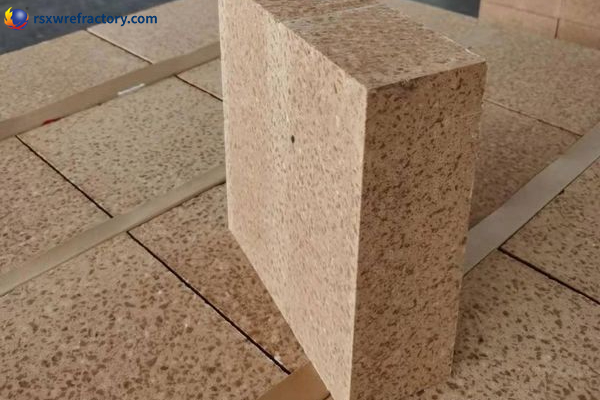
マグネシア - アルミナスピネルレンガ マグネシア - アルミナスピネルが主な鉱物としてのマグネシアレンガです, マグネシアレンガの熱ショック安定性を改善するために、成分にアルミナを追加することによって生成されます. 直接結合したマグネシアクロームレンガの生産後, 現在、高度なマグネシアアルミナスピネルレンガの方向に発展しています. 生産中, 高純度のマグネシアの砂と合成スピネルは原料として使用されます, そして、2つの比率はです 0.7-0.8 に 0.3-0.2. 生産方法には、電気融解と焼結が含まれます. スピネルレンガの利点は、優れた熱衝撃安定性です. 使用中, クリンカーと反応して、レンガの表面に非常に薄いカルシウムアルミネート保護層を形成することができます, 液相が浸透することを困難にします, そして、縞模様のパフォーマンスは、直接結合したマグネシアクロームレンガのパフォーマンスよりも優れています. しかし, 腐食抵抗は、直接結合したマグネシアクロームレンガの耐性よりもわずかに劣っています.
普通のマグネシアクロムブリック
マグネシアクロームレンガ MGO55-80%を含む, CR2O3≥8%, 主な鉱物はペリキラーゼとクロムスピネルです, そして、ケイ酸塩相はforsteriteとカルシウムforsteriteです. CR2O3コンテンツが同じくらい高い場合 18-30%, およびMGO25-55%, それはマグネシア・クロームのレンガと呼ばれます. 通常のマグネシアクロームレンガは、アルカリスラグに対して強い耐性を持ち、マグネシアレンガよりも酸性スラグに対する耐性が高くなります, 高負荷軟化点, 高温での良好な体積安定性, 1500℃での小さな再燃焼線形収縮.
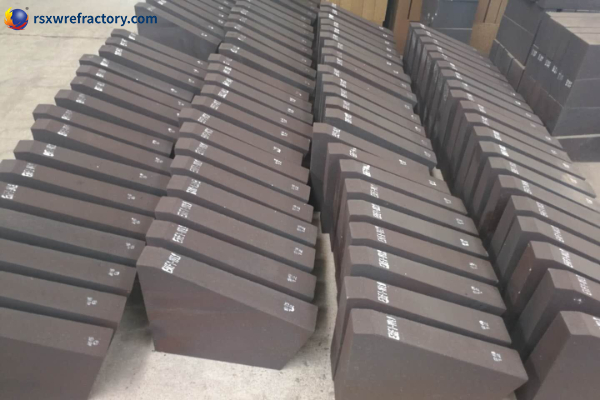
直接結合マグネシアクロムレンガ
大きなkiで, キルン温度は1700を超えています, そして、通常のマグネシアとクロームのレンガは、要件を満たすのが難しい. 直接結合したマグネシアクロームレンガは、大規模セメント生産に適応するために開発された高品質のマグネシアクローム難治性材料です. 直接結合したマグネシアクロームレンガは、高品質のマグネシア鉱石とクロマイト鉱石で作られています。. 彼らは最初に明るい燃えたマグネシアの砂に発射されます, その後、特定のグラデーションに応じて高圧下でボールに栽培されました, 1900年の高温で燃えたマグネシアの砂に発射されます℃, そして、クロマイト鉱石の特定の割合が追加されます, 押された, そして形成されました, 1750-1850のトンネルキルンで焼成されました. 1750-1800で発射されたものは、高温で直接結合したマグネシアクロームレンガです, 1800-1850で発射されたものは、超高温で直接結合したマグネシアクロームレンガです.
マグネシウムレンガと組み合わせたポリリン酸ナトリウム
このレンガは化学的に結合したマグネシウムレンガです, 集合体としての高カルシウム合成マグネシウム砂で構成されています, バインダーとしてのポリリン酸ナトリウム, ハイドレーション阻害剤としてのパルプ廃棄物液. その比率はです: 高カルシウムマグネシウム砂: ポリリン酸ナトリウム: パルプ廃棄物液: 水, 比率はです 3:0.7〜1.0:3:3.5. 混合後, 濡れたままです, 押された, 完成品になるために150〜200を乾燥させます. ポリリン酸ナトリウム結合マグネシウムレンガには、室温硬化と熱硬化特性の両方があります, 室温の強度と1450の圧縮強度はどちらも高い; 柔らかいポイントをロードします, 一般的に 0.6% 変形の出発点は、1500〜1690の間で変動します, 4% 変形点は1700を超えています; 熱膨張係数と弾性率は、通常のマグネシウムクロムレンガよりも高い; 熱ショックの安定性は、通常のマグネシウムクロムレンガよりも優れています; セメントクリンカー侵食抵抗も良好です.
アルカリ抵抗性レンガ
のAl2O3含有量を備えたアルカリ耐性粘土レンガ 25-28% kiのガスのアルカリがレンガの表面に凝縮し、レンガの表面と素早く反応します, 高粘度のgl薬層を形成します, アルカリがレンガの体の内側を侵食し続けるための毛穴をブロックします, それにより、防止します “アルカリ亀裂”. my country’s ordinary alkali-resistant clay bricks have SiO2>65%, Al2O3<30%, bulk density>1.9g/cm3, 見かけの多孔性<25%, room temperature compressive strength>20MPa, 熱伝導率1.163W/m・k (350℃), 熱膨張係数6×10-6/℃, and load softening point starting point>1320℃.
断熱抵抗性材料
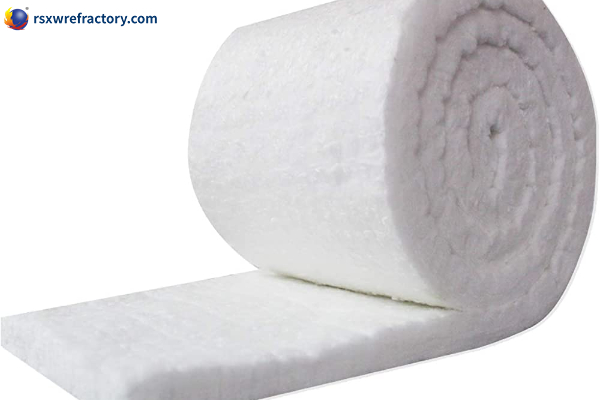
断熱耐火材料は、軽量の耐火物質で作られた断熱製品です. その品種には、軽量の焼成レンガが含まれます, 耐衝撃性コンクリート, 断熱材, そして セラミック耐火繊維製品. それらはすべて、多孔質構造の特性を持っています, 軽量, 低熱伝導率, 優れた熱断熱性能.
 栄生グループ
栄生グループ

微信
wechatでQRコードをスキャン